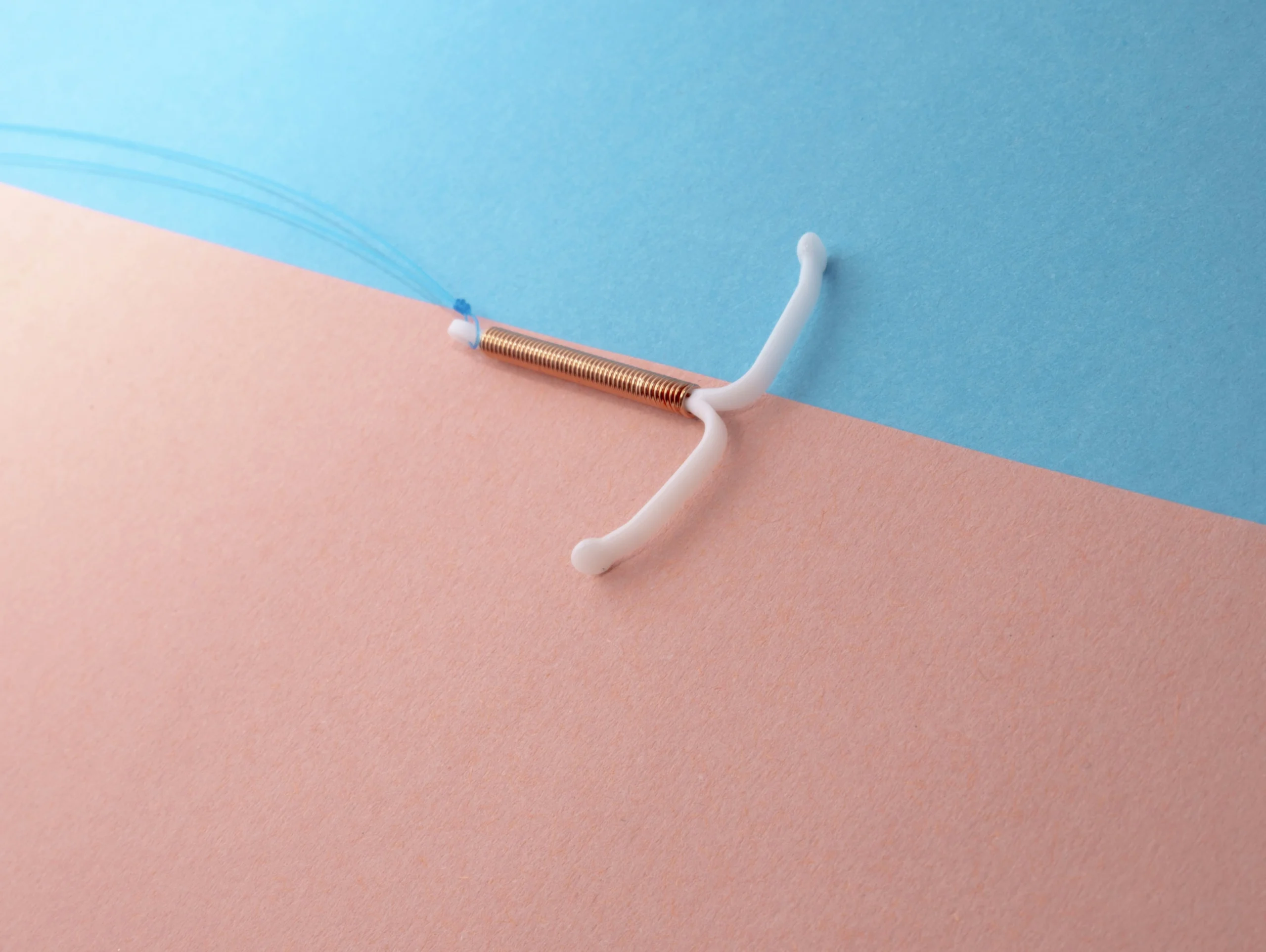IUDs are over 99% effective, with failure rates of 0.08% for copper and 0.02% for levonorgestrel types. Since 1995, the use of long-acting reversible contraception (LARC) has increased, now representing 14% of contraceptive users.
Despite their reliability, copper IUDs, a popular hormone-free contraceptive, can cause complications like pelvic inflammatory disease (PID) and menstrual issues. These potential risks underscore the importance of understanding the side effects associated with copper IUDs.
We discuss these issues, which are crucial for making informed decisions about long-term contraceptive methods and maintaining reproductive health.
Increased Risk of Pelvic Inflammatory Disease (PID)

Pelvic Inflammatory Disease (PID) is a severe infection affecting the female reproductive organs, and copper IUD insertion increases this risk. The device can introduce bacteria into the uterus, raising the likelihood of PID, particularly in women with pre-existing sexually transmitted infections (STIs).
Serious consequences include infertility, ectopic pregnancy risk, and chronic pelvic pain can result from PID if treatment is not received.
Medical News Today reports IUDs, though over 99% effective, carry a slight risk of PID, generally less than 1%. This risk is minimal compared to the benefits, with untreated STIs more commonly causing PID. The risk of PID from an IUD usually goes away after about three weeks. Prompt treatment and prevention strategies can effectively manage and mitigate this risk.
Menstrual Irregularities and Heavy Bleeding

Copper IUDs can cause menstrual pattern changes, with many women experiencing heavier, prolonged periods, cramping, and spotting, especially in the early months. These changes can include increased cramping and spotting between periods.
- Some women may find these symptoms lessen over time, but others may continue experiencing significant discomfort,
- Affecting their quality of life.
- Understanding these potential side effects is crucial for women considering a copper IUD.
- Especially those with heavy menstrual bleeding or anemia.
Healthline states after IUD insertion, you may experience heavy or irregular bleeding for 3 to 6 months. Copper IUDs are linked to heavier bleeding and increased cramping, while hormonal IUDs often make periods lighter. A study found that heavy bleeding in the first year is a common reason for IUD discontinuation, though it normalizes.
Device Breakage and Fracture

Device breakage during IUD removal is a serious issue, potentially causing severe complications such as internal injuries and infections. When the IUD fractures, it often requires further surgical procedures to address the fragments and any resulting damage.
- This significant risk has prompted numerous lawsuits against the manufacturers,
- Plaintiffs seeking compensation for the resulting health problems and medical costs.
- One such manufacturer that has faced the heat of lawsuits is CooperSurgical, maker of the Paragard IUD.
The Paragard lawsuit targets the manufacturer with claims of health issues like PID, device breakage, and fertility problems from the copper IUD. According to the claims, customers were not sufficiently warned about these risks by the manufacturer, which led to major health issues.
The lawsuits demand payment for long-term health impacts, pain and suffering, and medical costs.
As of July 1st, 2,736 cases remained open in the Paragard IUD lawsuit, according to the JPML. By August 1st, the number of filings rose to 2,774, indicating a growing trend in Paragard IUD cases, states TorHoerman Law.
Risk of Ectopic Pregnancy

Copper IUDs effectively prevent intrauterine pregnancies but do not eliminate the risk of ectopic pregnancy, where an egg implants outside the uterus. Ectopic pregnancies are dangerous and need urgent medical treatment to prevent serious health complications.
- The Ectopic Pregnancy Trust states a review found that ectopic pregnancies occur in 0.02% of women using hormonal IUCDs.
- It also affects 0.05% of those using copper IUCDs annually.
- This is much lower compared to the overall incidence of 1.25% in the UK. Although IUCDs increase the likelihood of an ectopic pregnancy,
- Their low pregnancy rates significantly lower the overall risk.
- Women with a copper IUD should monitor for symptoms like severe abdominal pain, unusual bleeding, or dizziness, which may signal ectopic pregnancy.
- Although the incidence is low, this risk is a crucial consideration for women choosing a copper IUD.
Possible Effects on Fertility
Although many women conceive soon after removing a copper IUD, long-term use, especially with infections like PID, might affect fertility. Insertion of the IUD can cause inflammation or scarring in the uterus or fallopian tubes, potentially hindering conception.
Allergic Reactions and Device Displacement

CWHC states allergic reactions and device displacement are notable IUD complications. Displacement affecting 2-3% of users can be complete (IUD in the vagina) or partial (IUD out of position).
Both types impact contraceptive effectiveness. Infections, though rare, can result from insertion and lead to pelvic inflammatory disease. Regular string checks help ensure proper IUD placement.
- Though uncommon, some women may experience allergic reactions to the copper in IUDs, presenting as itching, rash, or swelling.
- There is a risk of the device becoming displaced, which can reduce its effectiveness or cause discomfort.
- Displacement can occur due to uterine contractions, improper insertion, or vigorous physical activity.
- Regular medical check-ups are vital to monitor the IUD’s position, ensuring effectiveness and preventing complications like unintended pregnancy or uterine injury.
Consultation with Healthcare Providers

A detailed discussion can help assess the suitability of the device, considering individual health history and addressing any concerns. Healthcare providers offer advice on managing side effects, recognizing early complications, and determining the right time for IUD removal or replacement.
Regular follow-up appointments are crucial for identifying and managing any issues promptly, contributing to safer and more effective copper IUD use.
People Also Ask
Q1. What symptoms should I watch for to detect potential complications from a copper IUD?
Answer: Be alert for severe abdominal pain, heavy or unusual vaginal bleeding, and signs of infection like fever or abnormal discharge. Dizziness, pain during intercourse, or sudden menstrual changes may indicate complications like device displacement, PID, or ectopic pregnancy, requiring immediate medical attention.
Q2. How does using a copper IUD affect future fertility once it is removed?
Answer: Most women regain fertility quickly after removing a copper IUD, with no lasting effects. However, if complications such as pelvic inflammatory disease arise, scarring in the uterus or fallopian tubes might impede conception. Consulting a healthcare provider can help address any concerns and support a smooth path to pregnancy.
Q3. How can I manage or mitigate the side effects of a copper IUD?
Answer: To alleviate side effects, over-the-counter pain relievers can ease cramping, while iron supplements may help with heavy bleeding. Regular check-ups with your healthcare provider are essential for monitoring the device’s position and addressing issues early. If side effects persist, discuss alternative contraception options with your provider.
Weighing the Options
Copper IUDs are an effective, long-term contraceptive option, but they carry certain risks. Understanding potential health issues, from PID to fertility effects, is essential for women making informed decisions about their birth control methods. Regular consultations with healthcare providers, combined with awareness of complication signs, can help mitigate these risks and ensure a safe contraceptive experience.

